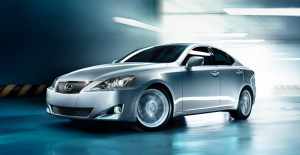I have a confession to make and I’m not Catholic, so this won’t be easy but, please bear with me. I don’t have the most complex and refined taste buds in the world. I prefer my foods to be simple and not mixed with one another. Think of what a child in kindergarten might like to eat for breakfast, lunch, and dinner and you’ll have a pretty clear idea of my entire diet: chicken fingers, pasta, peanut butter and jam sandwiches, hamburgers, pizza, fries, and cereal. So what? I’m a picky eater because I don’t like surprises. Add to this an attempt to follow kashrut, and you can see why my diet is so narrowly focused and why I’m clinically malnourished. Not the healthiest diet, I’ll admit that much, but it is reliable and I always know how things will taste before I eat them. There’s a great degree of comfort in knowing that your next meal won’t offend your mouth. My girlfriend, who loves all kinds of foods, can’t understand what’s wrong with me. Did my tongue stop growing at age 6? Who knows. But I don’t fight it, I accept it. This is the way I like my food. This is not the way I like my cars.
I prefer my cars to evoke passion, to make me wonder how I ever got through life without them, to have character. I also like to know that the people who make my cars have as much passion for automobiles as I do. I know that the Italians have passion for cars, I mean my God, have you seen the Afla Romeo 8C? I like Italian cars for the most part because the Italians are a passionate people who understand what cars are really about. The Germans also make very good cars, which is odd because they are very good technically (the people and the cars), yet somehow they make vehicles that can stir the soul. This may be due to the high-speed road network native to Deutschland or perhaps some kind of X-factor that my Canadian mind can’t grasp. The Japanese, on the other hand, are relatively new to the luxury car scene and also make a very good luxury vehicle but their vehicles tend to be more comfortable than sporting. And by comfortable I mean lacking in passion.
A perfect example of the comfortable Japanese sedan is the Lexus IS. Now in its second generation, the IS has matured and broadened its market past wealthy ricers with two different V6 engines and even an all-wheel-drive option. The new IS threatens the 3-series only in the minds of the Lexus PR division, in reality the IS has created its own little niche. Creating one’s own niche is harder said than done these days and the results are usually horrific (see BMW X6) but Lexus has managed to carve out its own segment of the entry-level luxury sedan market that its competitors have previously ignored. Lexus has accomplished this considerable feat by sticking to a rear-wheel drive platform and offering a small-displacement V6 option to keep the cost of entry reasonable, as it should be. This smaller engine is a 2.5L unit putting out 204hp to either the rear wheels, or all four. The larger 3.5L makes 306hp and is only available in RWD. The base model starts at only CDN$31,500 and has cloth seats as standard. The model we tested was the IS250 AWD, the most popular choice for Canadians looking for something luxurious, winter-ready, and affordable for the class.
I say that Lexus has carved out a niche because the competitors of the IS are either FWD (like the TL, TSX, and A4), only have larger engines (G37), are more expensive (3-series), or are tuned to be sporty instead of comforting (all of the above). That therefore leaves the IS with a market share of individuals who like dependable, if slightly dull, cars. So let’s dissect out tester a little further.
Approaching the IS, it is easy to see why it is one of Lexus’ top selling models. The lines are clean and uncluttered and the whole form factor is solid and compact. Starting up the vehicle requires the use of a starter button instead of the Neanderthalic turn-key. This starter button thing appears to be a frightening trend but I guess we’ll see who’s laughing when humans evolve past opposable thumbs. Maybe the Japanese already have. Actually, that would explain a few things, including the steering.
I suppose that when you don’t have opposable thumbs, steering feel isn’t a big deal. Twisting the cap off a jar, on the other hand, is. Well steering feel is a big deal for this Canadian, and the IS let me down in this regard. There was no feedback as to the condition of the road surface or the grip from the front tires. Thankfully, this wasn’t a huge issue because the engine was so anemic that it struggled to get to a speed sufficient for me to be let down by the steering. Also, the engine note was pitiful enough to make me want to keep the revs under 3,000. The engine had no desire to have the snot revved out of it, so I mostly just toodled around in the IS. It was most likely designed for just that so it wasn’t the end of the world, but it certainly became apparent that the 250 was no sports car and the added weight of the AWD system just neutered any handling prowess the platform had to begin with.
The gearbox was also unresponsive to shifts requests via the steering wheel-mounted paddles. Not unresponsive in the way the IS-F was, where downshifts wouldn’t happen if you were going too close to the redline, more unresponsive in terms of it taking 12 seconds (slight exaggeration, but only slight) to respond to your command. Very frustrating.
I could feel that the chassis had potential to be a great driver’s car, but it was sorely let down by its engine and gearbox. I suppose that’s why the made then IS-F then. An advantage that the IS has over the F is the extra seat in the back. Cramped as it was for someone over 6 feet tall in the two window seats, the middle seat is still useful for smaller individuals.
The interior, from the driver’s perspective at least, is respectable for a vehicle in this category. The buttons are well-laid out and smooth to operate, there is lots of storage space, visibility to acceptable, but the whole cabin feels a bit cramped. This isn’t a large car in terms of exterior dimensions, but it feels as though a Honda Fit has more interior space. Now getting back to the starter button, once you press it, you are treated to a little start-up show whereby the needles on the gauges do some rotations and the steering wheel moves up and out under its own power to arrive at your hands. This sounds all well and good in theory, but in practice, the steering wheel tries to chop your legs off. First it goes telescopes out, then it tilts up, which is backwards of what it should do. So when you get in the car, the steering wheel seems fine, but when you start it up, things quickly turn grim as you scramble to save your legs from certain amputation. All Lexus vehicles do this but I can’t understand why power tilt/telescope is necessary or desirable in the first place. It’s not as if it was a huge hardship to adjust one’s steering wheel in the first place. I mean, you only do it once in a blue moon. Are we that lazy? Why do we need technology for the sake of technology? Should my seatbelt do itself up? Will technology soon be telling me what my favourite radio station is? Should I ask more rhetorical questions?
On that high note, I’d like to say that as whole, the IS250 AWD was too much like my food. Not terribly interesting or exiting but very appealing to the person who isn’t looking for either of those things. As a vehicle for Canada, the AWD system should stand you in good stead and keep you out of the ditch. This vehicle wasn’t for me though, I’m just hungry for something with a little more flavour.
Price as tested: $46,000
Summary: Tasteless.
Exterior Design: 7/10. Nice lines, baby.
Interior Design: 4/10. I like my legs to be attached to my torso, thank you very much.
Engine: 2/10. Weak sauce.
Transmission: 2/10. When I say “jump”, you should say “how high?”.
Audio/Video: 7/10. Great audio.
Value: 6/10. Strong value compared to 3-series. Just don’t compare it to the G37.
Overall (not an average): 5/10
Special thanks to Bruce Kirkland and Lexus of Edmonton.


